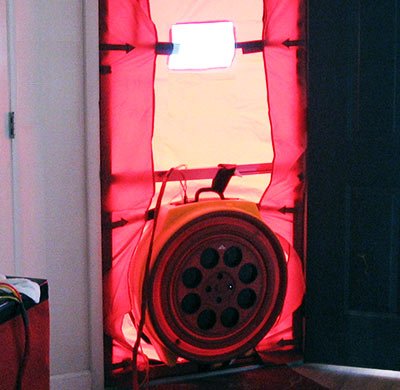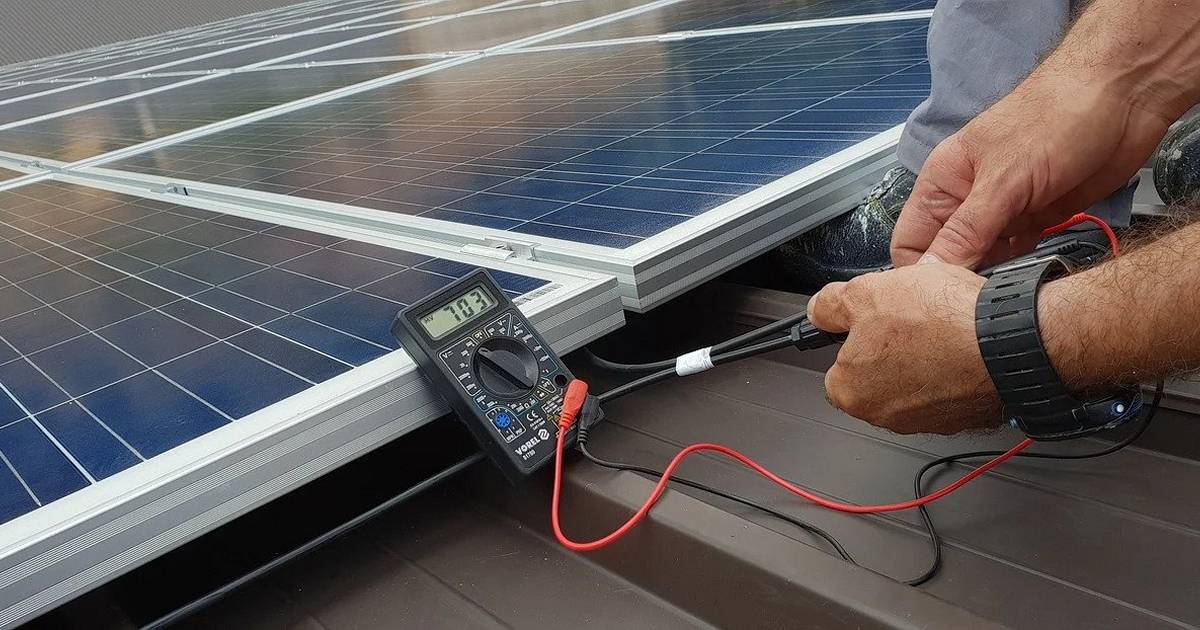Reclaim comfort + cut waste with help from energy testing
Reclaim comfort + cut waste with help from energy testing
Blog Article
How Energy Testing Can Cause A Lot More Lasting Living Solutions
Energy screening is an essential tool for advertising lasting living. It discovers inadequacies in energy use within homes. Approaches such as energy audits and thermal imaging give important understandings. Home owners can determine areas requiring improvement, from insulation to appliances. Resolving these ineffectiveness can result in substantial energy financial savings. Several continue to be not aware of the full capacity of these practices. What actions can people take to enhance their homes and add to a more sustainable future?
Understanding Power Screening and Its Significance
Typical Approaches of Energy Screening
There are a number of usual methods of energy testing that home owners can use to examine their power performance (energy testing). One widely used technique is the blower door test, which determines the air leakage in a home. By pressurizing the building, it determines breezy locations that might need securing. An additional approach is thermal imaging, where infrared cameras identify temperature variations in wall surfaces, home windows, and ceilings, highlighting insulation issues.Energy audits are additionally prominent, entailing a comprehensive evaluation of a home's energy use, typically carried out by an expert. These audits may include assessing heating and cooling systems, home appliances, and total power intake patterns. In addition, smart power meters can supply real-time information on energy usage, aiding property owners comprehend their usage practices. Together, these approaches give important insights, allowing property owners to make enlightened choices regarding boosting their power effectiveness and promoting sustainable living methods
Identifying Energy Inefficiencies in Your Home
Recognizing power inefficiencies in a home is necessary for house owners intending to lower energy intake and lower energy bills. Typical areas to examine include insulation, home windows, and home appliances. Poor insulation can bring about significant warmth loss in wintertime and unwanted warmth gain in summer, making heating & cooling systems work harder. Breezy windows contribute in a similar way, enabling conditioned air to run away and enhancing power demand.Additionally, outdated home appliances frequently eat more energy than their modern counterparts, additionally aggravating inadequacy. Homeowners should likewise think about the illumination system, as incandescent light bulbs use even more energy contrasted to LED options.Regular maintenance of heating and cooling systems is crucial, as forget can result in minimized performance. By systematically assessing these elements of a home, house owners can determine areas needing enhancement. Addressing these inefficiencies not only improves comfort yet additionally adds to a much more lasting lifestyle by reducing energy waste.
The Role of Energy Audits in Sustainability
Power audits play an important function in promoting sustainability by offering house owners with a considerable analysis of their power use. These analyses recognize locations where power is lost, enabling people to recognize their intake patterns and make notified decisions for enhancement. By disclosing inefficiencies in heating, air conditioning, insulation, and devices, power audits function as a crucial device for lowering total power demand.Furthermore, they facilitate the implementation of energy-saving measures, such as updating insulation or mounting energy-efficient illumination, which can significantly reduce utility expenses and lower carbon footprints. The insights obtained from a power audit empower home owners to prioritize sustainability in their living environments. As more households take part in this procedure, the cumulative effect adds to more comprehensive ecological goals, cultivating a culture of power consciousness and obligation. Eventually, energy audits are foundational to advancing sustainable living services, profiting both specific home owners and the setting at huge.
Ingenious Technologies for Energy Performance
As homeowners progressively seek to enhance their power efficiency, innovative innovations are emerging to sustain these endeavors. Smart home systems, outfitted with sensors and automation, allow home owners to control and check energy usage in real-time. These systems can adjust cooling, lights, and home heating based on occupancy, therefore decreasing waste.In addition, innovations in energy-efficient home appliances have actually made substantial strides. Gadgets such as power STAR-rated fridges and cleaning equipments consume much less energy while offering perfect performance. The combination of eco-friendly power sources, like solar panels and wind generators, allows house owners to generate their own power, reducing dependence have a peek at this site on nonrenewable resources.Building materials have additionally advanced, with choices like shielded concrete kinds and energy-efficient home windows contributing to decreased energy loss. Together, these innovative modern technologies not only improve energy performance but likewise cultivate an even more sustainable living setting, empowering house owners to make impactful options in their energy intake practices.
Long-Term Advantages of Sustainable Living
While lots of might check out sustainable living as a fad, its lasting benefits extend far beyond mere way of life selections. Welcoming lasting methods brings about considerable decreases in carbon footprints, adding to a healthier earth. By decreasing source intake and prioritizing sustainable energy, people and communities can experience reduced utility expenses. This economic relief can boost financial stability over time, permitting reinvestment in various other necessary areas.Furthermore, sustainable living cultivates stronger area ties as individuals collaborate on local efforts, advertising social cohesion. Wellness advantages likewise arise, as reduced contamination and boosted eco-friendly rooms enhance air quality and general wellness. Furthermore, future generations will inherit a more sustainable environment, making certain the accessibility of all-natural sources and biodiversity. Inevitably, the long-lasting benefits of lasting living include ecological, economic, and social dimensions, presenting an engaging situation for individuals to embrace and preserve these techniques for the greater good.
Steps to Implement Energy-Saving Solutions
Carrying out energy-saving options starts with a complete assessment of power intake patterns to identify locations for see this website enhancement. Once these patterns are understood, individuals can identify energy-efficient upgrades that align with their needs. Constant monitoring and modifications to energy usage guarantee that these services remain effective over time.
Evaluate Energy Usage Patterns

Evaluating power intake patterns is an essential step toward identifying reliable energy-saving remedies. By methodically tracking use throughout various times and individuals, organizations and devices can pinpoint locations of extreme intake. This evaluation can disclose peak usage periods, enabling a far better understanding of when power needs are highest. In addition, analyzing patterns permits for comparisons between comparable appliances, highlighting those that operate much less successfully. Information collection approaches, such as clever meters and energy audits, offer useful understandings right into overall power use. Determining patterns over time can assist in acknowledging seasonal variants and shifts in consumption routines. This fundamental understanding is vital for developing targeted techniques that advertise lasting living and minimize total energy expense.
Identify Energy-Efficient Upgrades
To effectively execute energy-saving solutions, identifying energy-efficient upgrades is crucial for both property owners and organizations. This process begins with a thorough analysis of existing systems, consisting of heating and cooling units, insulation, and home appliances. Upgrades may encompass mounting ENERGY STAR-rated appliances, enhancing insulation, and using energy-efficient windows. Additionally, implementing smart thermostats can maximize heating and cooling down timetables, minimizing power intake. Changing to LED lights is an additional effective procedure, as it takes in substantially much less energy than traditional bulbs. Additionally, exploring renewable resource options, such as photovoltaic panels, can offer long-term cost savings. Ultimately, prioritizing these upgrades not just adds to lowered power expenses but also fosters a dedication to sustainability, benefiting both the atmosphere and future generations.
Display and Change Usage
Tracking and readjusting power use is vital for taking full advantage of the benefits of energy-saving services. Regularly reviewing energy usage patterns enables individuals and services to determine areas for improvement. By making use of wise meters and energy management systems, customers can track real-time use and identify any kind of anomalies that may show inefficiencies.Adjusting actions, such as switching off lights and disconnecting unused gadgets, better boosts energy cost savings. Furthermore, organizing home appliances to run during off-peak hours can significantly decrease costs.Conducting regular energy audits guarantees that carried out solutions stay reliable with time. By proactively engaging in surveillance and adjusting methods, people can optimize their energy effectiveness, add to sustainability initiatives, and ultimately lower their ecological footprint.
Frequently Asked Inquiries
Just how much Does an Energy Audit Usually Expense?

Can Power Screening Aid Reduce Energy Costs?
Energy screening can markedly decrease utility bills by determining ineffectiveness in a home's power usage. By dealing with these problems, property owners commonly experience lower consumption and prices, leading to even more affordable energy monitoring and improved financial savings.
What Qualifications Should a Power Auditor Have?
A power auditor should have pertinent certifications, such as RESNET or BPI, together with experience in structure scientific researches. energy testing. Solid logical skills and expertise of power efficiency techniques are vital for carrying out precise evaluations and supplying efficient referrals
Are There Federal Government Incentives for Power Efficiency Upgrades?
Government motivations for energy effectiveness upgrades typically exist, consisting of tax obligation discounts, gives, and credit histories. These programs aim to motivate companies and house owners to buy energy-saving innovations, inevitably promoting ecological sustainability and decreasing overall energy consumption.
How Typically Should I Conduct Energy Testing in My Home?
Energy testing ought to ideally be carried out every year to determine ineffectiveness. Property owners might consider more regular analyses after substantial renovations, changes in power costs, or if uncommon drafts or temperature level variations are seen within the home. Power screening enables the analysis of just how well a home uses energy, determining areas where waste happens. Identifying energy inadequacies in a home is essential for homeowners intending to reduce power usage and reduced utility bills. Energy audits play a vital role in advertising sustainability by offering house owners with a comprehensive evaluation of their power usage. By revealing inefficiencies in home heating, cooling, insulation, and appliances, energy audits offer as a vital device for lowering overall energy demand.Furthermore, they help with the application of energy-saving procedures, such as updating insulation or mounting energy-efficient lights, which can significantly decrease utility costs and lower carbon impacts. Energy testing can significantly decrease utility expenses by recognizing ineffectiveness in a home's power usage.
Report this page